Seoul (English pronunciation: /soʊl/; Korean: [sʌ.ul] — officially the Seoul Special City — is the capital and largest metropolis of South Korea. A megacity with a population of more than 10 million, it is the largest city proper in the developed world. The Seoul Capital Area, which includes the surrounding Incheon metropolis and Gyeonggi province, is the world's second largest metropolitan area with over 25.6 million people, home to over half of South Koreans along with 632,000 international residents.
Situated on the Han River, Seoul's history stretches back more than 2,000 years when it was founded in 18 BCE by Baekje, one of the Three Kingdoms of Korea. It continued as the capital of Korea under the Joseon Dynasty and the Korean Empire. The Seoul metropolitan area contains four UNESCO World Heritage Sites: Changdeok Palace, Hwaseong Fortress, Jongmyo Shrine and the Royal Tombs of the Joseon Dynasty. Seoul is surrounded by mountains, the tallest being Mt. Bukhan, the world's most visited national park per square foot. Modern landmarks include the iconic N. Seoul Tower, Lotte World, the world's second largest indoor theme park, and Moonlight Rainbow Fountain, the world's longest bridge fountain. The birthplace of K-pop and the Korean Wave, Seoul was voted the world's most wanted travel destination by Chinese, Japanese and Thai tourists for three consecutive years in 2009–2011 with over 10 million international visitors in 2012.
Today, Seoul is considered a leading and rising global city, resulting from an economic boom and growth known as the Miracle on the Han River which transformed it from the ashes of the Korean War to the world's 4th largest metropolitan economy with a GDP of US$774 billion in 2012 after Tokyo, New York City and Los Angeles.
Top Tourist Spots and Sites to Visit:
1.) Gyeongbokgung Palace


Gyeongbokgung(경복궁), also known as Gyeongbokgung Palace or Gyeongbok Palace -- is a royal palace located in northern Seoul, South Korea. First constructed in 1395, later burned and abandoned for almost three centuries, and then reconstructed in 1867, it was the main and largest palace of the Five Grand Palaces built by the Joseon Dynasty. The name means "Palace" [Gung] "Greatly Blessed by Heaven" [Gyeongbok].
In the early 20th century, much of the palace was destroyed by Imperial Japan. Since then, the walled palace complex has been gradually restored back to its original form. As of 2009, roughly 40% of the original number of palace buildings still stand or have been reconstructed.
How to get there:
Gyeongbokgung Station, Subway Line 3 - Exit 5
Insadong is a dong, or neighborhood of the Jongno-gu district of the South Korean city of Seoul. The main street is Insadong-gil, which is connected to a multitude of alleys that lead deeper into the district, with modern galleries and tea shops. At one time it was the largest market for antiques and artworks in Korea.
Insadong-gil is "well known as a traditional street to both locals and foreigners" and represents the "culture of the past and the present". It contains a mixture of historical and modern atmosphere and is a "unique area of Seoul that truly represents the cultural history of the nation." The majority of the traditional buildings originally belonged to merchants and bureaucrats. Among the historically significant buildings located in the area are Unhyeongung mansion, Jogyesa - one of the most significant Korean Buddhist temples, and one of Korea's oldest Presbyterian churches.
The area is well known for sightseeing, with approximately 100,000 visitors on Sundays reported in 2000. Insadong is also a visiting spot for foreign dignitaries such as Queen Elizabeth II and the princes of Spain and the Netherlands. Particularly noteworthy is Tongmungwan, the oldest bookstore in Seoul, and Kyung-in Art Gallery, the oldest tea house. There are daily calligraphy demonstrations and pansori performances.
How to get there:
1. Anguk Station, Subway Line 3 - Exit 6; or 2. Jonggak Station, Subway Line 1 - Exit 3; or 3. Jongno 3 (sam)-ga Station, Subway Line 1,3 or 5 - Exit 1
3.) Gangnam
The Gangnam District (Hangul: 강남구; hanja: 江南區; RR: Gangnam-gu) is one of the 25 gu (local government districts) which make up the city of Seoul, South Korea. Gangnam [kaŋnam] literally means "South of the (Han) River". As of the 2010 census, Gangnam District had a population of 527,641, making it the 4th most populated district in Seoul. Gangnam District is the third largest district in Seoul, with an area of 39.5 km2. In addition, a lot of parents choose the Gangnam area for their children's education, thanks to its many academies and privileged high schools.
Until the early 1980s Gangnam and its neighboring areas had remained the least developed in Seoul, but a prodigious development over the last 30 years has earned it a reputation of being one of the most affluent, dynamic, and influential areas in both Seoul and South Korea as a whole.
In addition, the COEX Convention & Exhibition Center in Gangnam recently hosted several international conferences such as the 2010 G-20 summit and the 2012 Nuclear Security Summit.
How to get there:
Gangnam Station, Subway Line 2 Exit 6
4.) Everland Resort
Everland Resort is a theme park in Yongin, a city in Gyeonggi-do province, South Korea.
Everland is South Korea's largest theme park. With 6.6 million visitors, Everland ranked thirteenth in the world for amusement park attendance in 2011. Along with its main attractions, Everland also includes a zoo and a water park known as Caribbean Bay. Everland is operated by Samsung Everland, which is a subsidiary of the Samsung Group.
The name of the park is of note, as the name "Everland" is English. In Korean, the name is approximated as "Ebeoraendeu" – in other words, there is no authentic Korean name for the park. This park was formerly called "Jayeon Nongwon" which roughly means "Natural Farm". Its former English name was "Farmland".
How to get there:
Take a train to Gangnam Station for Subway Line 2. After that, heading to Exit 6. Once out from the subway, walk straight for about 1 - 2 minutes until you reach bus station to Everland located on the right-hand side. Hop on to the 5002 bus which cost 1,800 won per single journey and there it goes all the way to Everland until you reach the final stop. The journey hasn't end here yet as you need to take another shuttle bus in order to reach Everland itself and no worries, this shuttle bus is free.
5.) Nami Island
Namisum is a tiny half-moon shaped island located in Chuncheon, South Korea, formed as it was inundated by the rising water of the North Han River as the result of the construction of Cheongpyeong Dam (청평댐) in 1944. Its name originated from General Nami (남이장군), who died at the age of 28 after being falsely accused of treason during the reign of King Sejo, the seventh king of the Joseon Dynasty of Korea. Although his grave wasn't discovered, there were a pile of stones where his body was supposed to be buried.
Nami Island is an oasis for culture and leisure in peaceful harmony with humanity and nature. After a five-minute ferry ride, guests meet a forest of verdant trees holding up the sky and open grassy areas where ostriches, rabbits, squirrels, chipmunks, ducks and peacocks warmly welcome visitors in the midst of wild flowers. In 2006, the island declared its cultural and artistic tourist attractions in Korea, and declared its cultural independence and was reborn as Naminara Republic. It has its own national flag, anthem, currency, passport and phone cards, stamps, orthography and even a certification of citizenship.
The island, especially the Metasequoia path, was one of the main filming locations of Korean Broadcasting System 2002 television drama series Winter Sonata, starring Bae Yong-joon and Choi Ji-woo. It attracted 270,000 Korean and foreign visitors in 2001. After it was featured in the drama, it attracted 650,000 visitors in 2002. Since then the number of visitors has continued to grow, reaching 2.3 million in 2012.
How to get there:
1. Dongdaemun History & Culture Park Station, Subway Line 42. Gunja Station, Subway Line 5
3. Sangbong Station, Subway Line 7
4. Gapyeong Station, Subway Line Gyeongchun
5. Upon arrive at Gapyeong Station, can opt either to take bus or taxi. But the local recommended taxi cause it cost less than 3,000 won for a trip. You can walk if you want but I warn you, it is so far away
6. Ferry boat at wharf
6.) Cheonggyecheon Stream
Cheonggyecheon (Hangul: 청계천) is an 8.4 km (5.2 miles) long, modern public recreation space in downtown Seoul, South Korea. The massive urban renewal project is on the site of a stream that flowed before the rapid post-war economic development required it to be covered by transportation infrastructure. The $900 million project initially attracted much public criticism but, after opening in 2005, has become popular among city residents and tourists. The stream was opened to the public in September 2005 and was lauded as a major success in urban renewal and beautification.
How to get there:
It is just located at the center of Dongdaemun area, therefore take subway Line 1 or 4 to Dongdaemun Station and exit 1.
7.) Dongdaemun
Heunginjimun, literally "Gate of Rising Benevolence" or more commonly known as Dongdaemun, is one of the The Eight Gates of Seoul in the Fortress Wall of Seoul, a prominent landmark in central Seoul, South Korea. The Korean name "Dongdaemun" means "Great East Gate," and it was so named because it was the major eastern gate in the wall that surrounded Seoul during the Joseon Dynasty. The gate is located at Jongno 6-ga in Jongno-gu.
Today, the area around Dongdaemun known as Dongdaemun Market includes upmarket shopping districts as well as several underground shops, stalls and markets that are open for much of the day and night. It has grown into the largest shopping center in South Korea. Popular to both foreigners and natives, many shops around the area are available for bargain. Additionally, there are many food stalls around the area which houses many popular Korean snacks. In 2007, the City of Seoul started Dongdaemun Design Project (DDP), to renovate what used to be Dongdaemun Stadium (an amateur baseball park). With world-famous architect Zaha Hadid's design, when completed this structure is expected to be one of the most notable landmarks in downtown Seoul.
How to get there:
Subway Line 1 or 4, Dongdaemun Station
8.) Myeongdong


Myeongdong (Hangul: 명동; hanja: 明洞, literally 'bright town') is a dong in Jung-gu, Seoul, South Korea between Chungmu-ro,Eulji-ro, and Namdaemun-ro. It covers 0.99 km² with a population of 3,409 and is mostly a commercial area, being one of Seoul's main shopping and tourism districts.
In 2011, 2012 and 2013, Myeong-dong was listed as the ninth most expensive shopping street in the world.
Myeongdong is one of Seoul’s main shopping districts featuring mid-to-high priced retail stores and international brand outlets, including Lacoste, Polo Ralph Lauren, Forever 21, Bulgari and Louis Vuitton, as well as Korean cosmetics brands such as Nature Republic, Missha,The Face Shop and Skin Food. It is a particularly popular area for young people and tourists as a center for fashion and sight-seeing. Several large shopping centers and department stores are in the district including Lotte Department Store, Shinsegae Department Store, Migliore, M Plaza, and Noon Square.How to get there:
Subway Line 4, Myeongdong Station
9.) Namsan Tower
The N Seoul Tower, (Hangul: N서울타워), officially the YTN Seoul Tower and commonly known as the Namsan Tower or Seoul Tower, is a communication and observation tower located on Namsan Mountain in central Seoul, South Korea. It marks the highest point in Seoul. It measures 236.7 m (777 ft) in height from the base and tops out at 479.7 m (1,574 ft) above sea level. It changed its name to N Seoul Tower in 2005. The "N" stands for 'new,' 'Namsan,' and 'nature.'
Many visitors ride the Namsan cable car up the Mt. Namsan to walk to the tower. The tower is renowned as a national landmark, and for its cityscape. It attracts thousands of tourists and locals every year, especially during nighttime when the tower lights up. Photographers enjoy the panoramic view the tower offers. Each year, approximately 8.4 million visit the N Seoul Tower, which is surrounded by many other attractions South Korea offers, including Namsan Park and Namsangol Hanok Village. The N Seoul Tower is divided into three main parts, including the N Lobby, N Plaza, and the N Tower.
In a poll of nearly 2,000 foreign visitors, conducted by the Seoul Metropolitan Government in November 2011, 16 percent stated that hanging named padlocks on the Tower fence as a symbol of love was their favorite activity in Seoul. This attraction is situated on the 2nd floor of the N Plaza, at the Roof Terrace. The "Locks of Love" is a popular location for people to hang locks that symbolize eternal love, and has been depicted in many Korean television shows, dramas, and movies for this reason.How to get there:
1.) By Cable Car
Go to Myeongdong Station (Subway Line 4), Exit 3. Take road to the right of Pacific Hotel and walk for 10min. From Hoehyeon Intersection (Myeongdong & Hoehyeon stations, Subway Line 4) walk towards Namsan Tunnel #3 and take the free Namsan Oreumi elevator to the cable car station. Namsan Oreumi is a free outdoor elevator that runs between the plaza in front of the Namsan Tunnel #3 Commemorative Plaza and the Namsan Cable Car.
2.) By Bus
Take Subway Line 3 or 4 at Chungmuro Station, and go out of Exit 2 to the right of Daehan Multiplex entrance.Take the yellow bus 2 at the bus stop in front of the subway station. Get off at the N Seoul Tower bus stop.
10.) Namdaemun Market
Namdaemun Market is a large traditional market in Seoul, South Korea. The market is located next to Namdaemun, the "Great South Gate," which was the main southern gate to the old city. It is the oldest and largest market in Korea.
Namdaemun Market is one of the oldest continually running markets in South Korea, and one of the largest retail markets in Seoul. Much of the market is outside, but there are also many stores which line the streets. Many retailers buy their items, particularly clothing, at wholesale prices at Namdaemun, to resell in their own stores in other cities. Namdaemun is a popular tourist attraction. The Market is on the Seoul list of Asia's 10 greatest street food cities for the hotteok.
How to get there:
Hoehyeon Station, Subway Line 4 – Exit 5, 6 or 7 (You can get off either one of these exit to the market)
Until next time...Seoul...











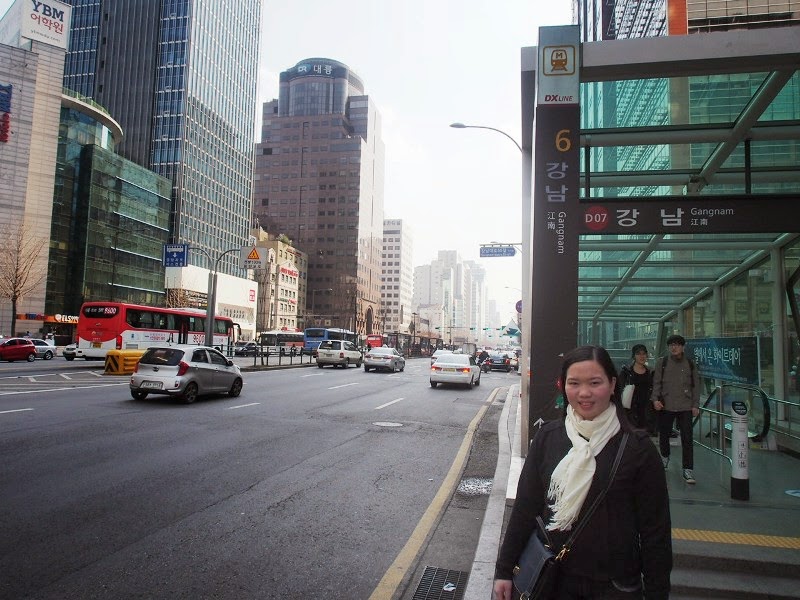















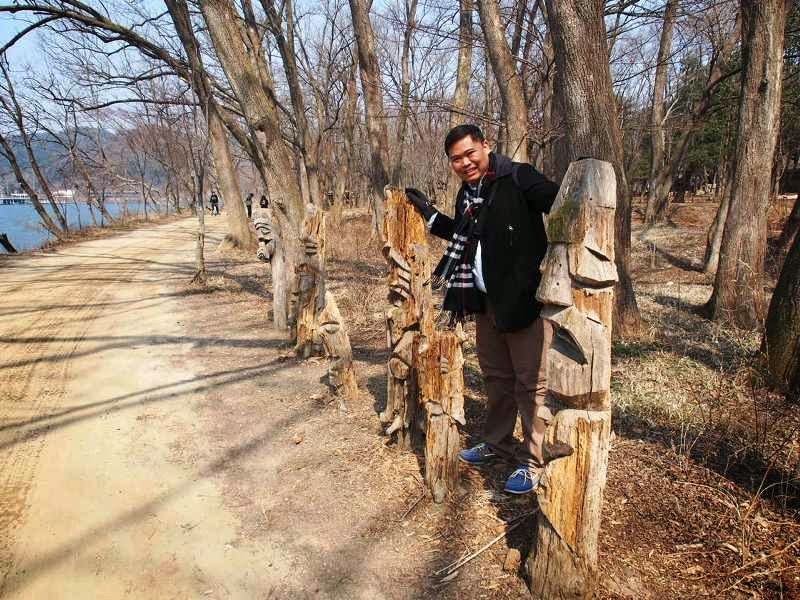


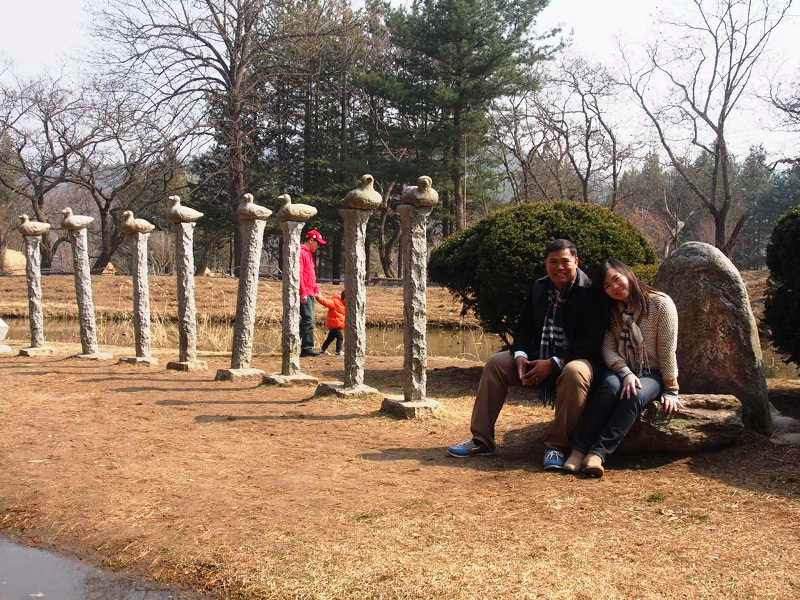

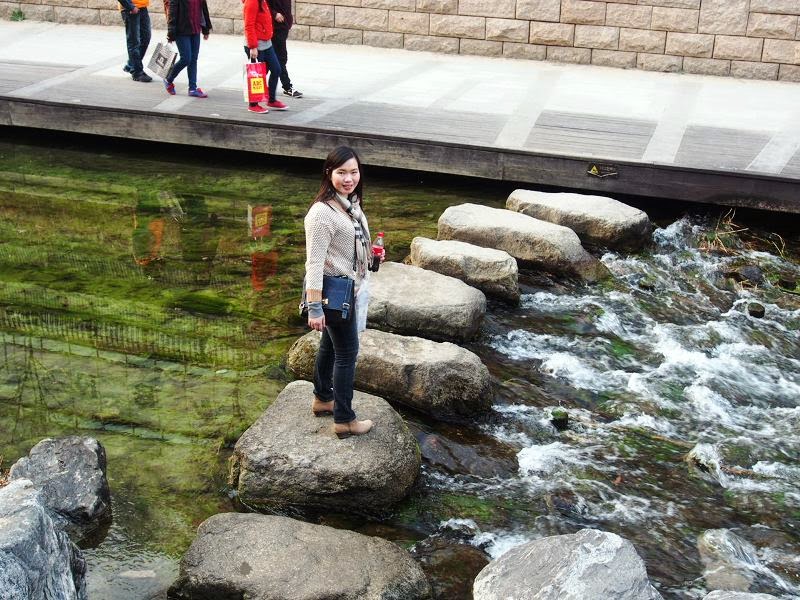

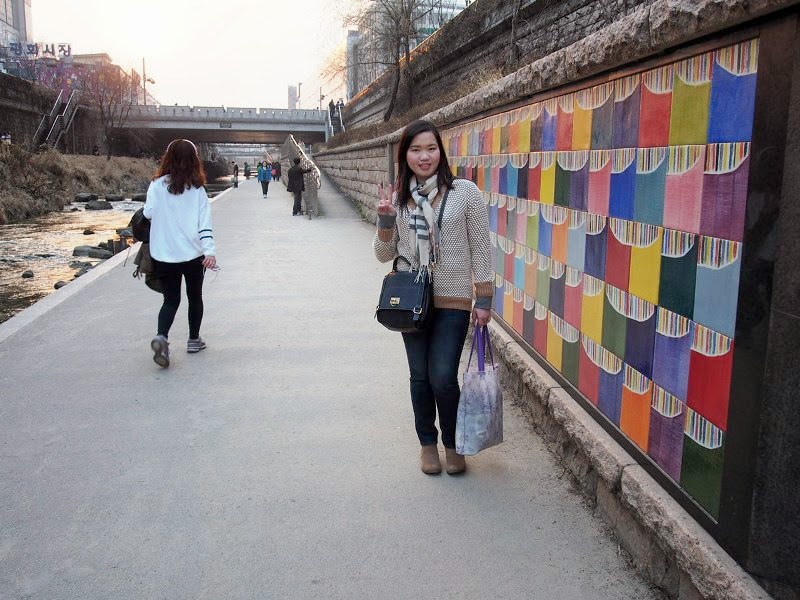






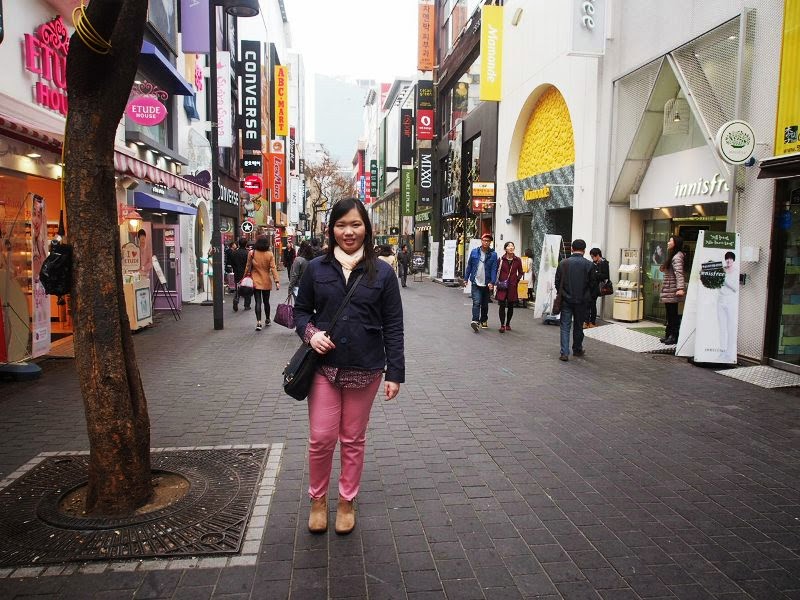












No comments:
Post a Comment
Note: Only a member of this blog may post a comment.